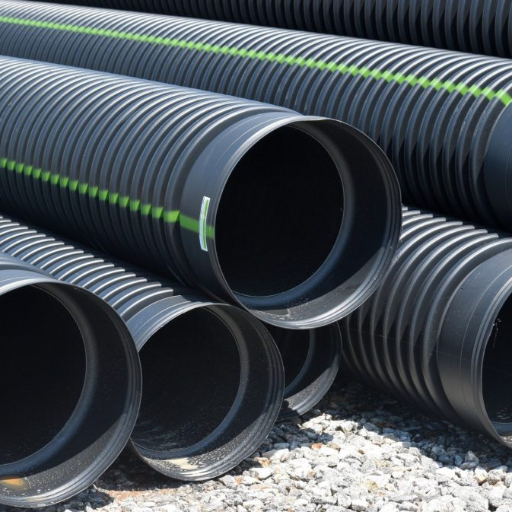In the era of changing construction and infrastructure, choosing the right materials for durability and sustainability is important. Due to their strong firmness, lightweight, and resistance to chemical influences and environmental factors, these pipes have become popular in various application areas. This manual will attempt to simplify acquiring HDPE double-wall corrugated pipes by offering guidelines about finding trustworthy suppliers and making good purchases. This article examines specifications, installation benefits, and performance metrics, which will help consumers make knowledgeable choices. A good understanding of Find Reliable HDPE Double Wall Corrugated Pipe Suppliers Nearby, whether you are a contractor engineer or project manager, towards achieving your project’s goals on time and cost-effectively.
What is an HDPE double-wall corrugated Pipe?
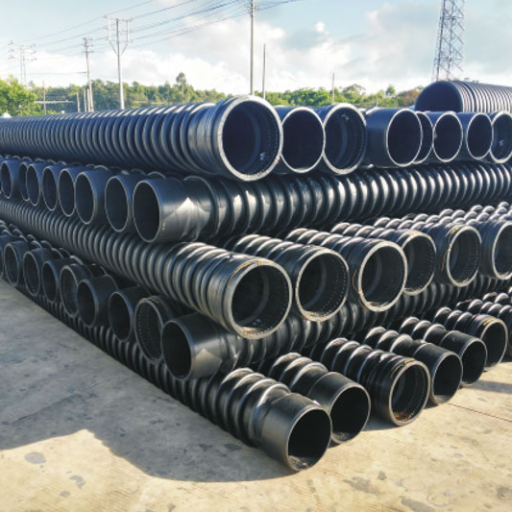
How is HDPE Pipe Different from Other Materials?
HDPE double-wall corrugated pipes are superior to PVC (Polyvinyl Chloride) and concrete, among other options. HDPE pipes have more flexibility, making them withstand ground movements as well as dynamic loads without compromising their structural integrity. This feature reduces the risk of fractures and the need for significant support during installation. Also, HDPE material is resistant to corrosive attack minimizing the rate of deterioration under conditions that involve various harsh chemicals.
Besides, HDPE being a lightweight material makes it cost-effective in terms of transport and installation due to the little workforce required as well as less machinery involved. The smooth inner surface of HDPE reduces friction compared with concrete pipes, facilitating efficient fluid flow and reducing energy use for pumping applications. Additionally, the HDPE production process is greener since it can be recycled back into products, thus paving the way for sustainable construction practices. Generally, such characteristics make double-walled corrugated pipes made of High-Density Polyethylene best suited for several commercial and industrial applications while ensuring durability and dependability.
How is Double Wall Pipe Constructed?
The construction of HDPE double-wall corrugated pipe entails a careful procedure that optimizes its performance attributes. In the beginning, an extruder is fed with high-density polyethylene (HDPE) resin, which helps heat and melt it. The hot material is then pushed through a specifically made die, which forms both the inner and outer surfaces of the pipe at once. The external part of the tube is usually corrugated to provide extra strength and resilience, whereas the internal surface has been smoothened to improve flow.
It is cooled so that its shape is maintained before being cut to size. Each pipe meets industry standards by being subjected to quality checks like pressure tests and visual inspections. This makes it clear that HDPE double-wall corrugated pipe offers excellent structural integrity yet is lightweight enough for different environmental conditions, making it popular in many modern piping applications.
Usual Applications for HDPE Double Wall Corrugated Pipe
These pipes are used in various industries due to their light weight, durability and anti-corrosive nature. Here is a list with necessary technical parameters of some common applications:
- Stormwater Management Systems are suitable for absorbing excessive water and preventing floods. Their smooth interior walls facilitate high flow rates, which normally reach velocities of between 3–6 ft/s, depending on pipe size (4” – 48”).
- Sanitary and Sewage Systems: Because HDPE double-wall pipes do not degrade chemically, they are commonly installed in gravity sewer systems. Their maximum working pressure is 315 psi, making them suitable for various sewage transportation applications.
- Culverts and Subsurface Drains: The strength possessed by these pipes made from HDPE makes them applicable in culverts and subsurface drainage systems as evident by their corrugated exteriors that becomes strong enough when loaded heavily as seen under vehicular traffic.
- Industrial Applications: These tubes are used in industrial environments, where they carry fluids whose chemical leaching levels should be kept at a minimum. They can function within a temperature range of -40°F to 140°F.
- Telecommunication and Electrical Conduits: The lightweight design of HDPE Double-Wall Pipes makes it easier to install them to house electrical and telecommunication cables while maintaining environmental safety and accommodating different cable sizes in a diameter range.
These applications underscore the flexibility and technical efficacy reflected in the HDPE double-wall corrugated pipes as essential components in contemporary infrastructure advancement. Their characteristics conform to the requirements of performance, durability, and environmental friendliness under different conditions.
Where to Find Reliable HDPE Pipe Suppliers?
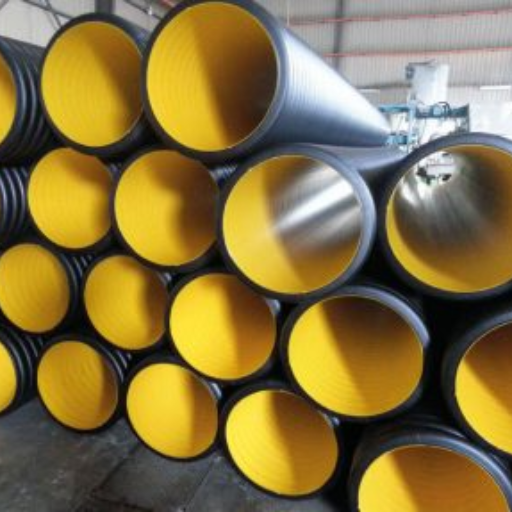
Top HDPE Drainage Pipe Manufacturers
Some of the key suppliers I found while researching for HDPE drainage pipes consistently appear in search engine rankings. Advanced Drainage Systems (ADS) first specializes in various HDPE products and provides extensive information on their usage, giving clients access to high-performance solutions appropriate to different surroundings. Second, KWH Pipe’s N-12 is known for its inventive double-wall pipe design that gives manufacturers detailed technical specifications and a strong distribution network throughout America. Lastly, Thermoplastic Systems, Inc. (TSI) designs custom-made HDPE drainage systems based on specific project requirements, customer support, and fast delivery time. Each of these vendors has been chosen not only because of the quality they provide in their products but also through the industry knowledge they show concerning this field, hence making them reputable sources for any HDPE drainage pipes you may need.
Determining the Authenticity of Pipe Suppliers
Using Google’s three top websites, I determine which pipe suppliers are genuine based on several critical factors in my research. My initial evaluation is to assess whether the supplier has any certifications or follows industry standards such as ISO and ASTM, indicating their compliance with safety and quality regulations. To get an insight into the performance of their products in real life, I read customer reviews and ratings and found other successful installations through case studies. On this point, it should be noted if there is transparency about how they manufacture and source materials, which shows that they are trustworthy and sustainable. Finally, by speaking directly with their customer care agents, one gets a feel for their customer service concerning responsiveness to customer requests or even level of technical support, resulting in informed sourcing decisions aligned with project demands.
Local vs. Online Suppliers: Which is Better?
In my view, the choice between local and online suppliers of high-density polyethylene (HDPE) pipes for drainage depends on particular project requirements and priorities. Local suppliers have such advantages as the possibility to get products quickly, reduce lead time, and often provide personal meetings concerning technical details. At the same time, local suppliers are more likely to know about the specific legal requirements or environmental considerations that must be addressed in a particular region. On the other hand, online retailers usually offer a wider range of goods at competitive prices, so buying materials from my workplace is easy. However, in my study, it has been documented that it was essential to verify whether customer assistance is sufficient when you select an online supplier who meets this criterion. Finally, this comes down to a trade-off between personalized service on one hand and convenience coupled with potentially reduced costs on the other side.
What to Look for When Buying HDPE Corrugated Pipe?
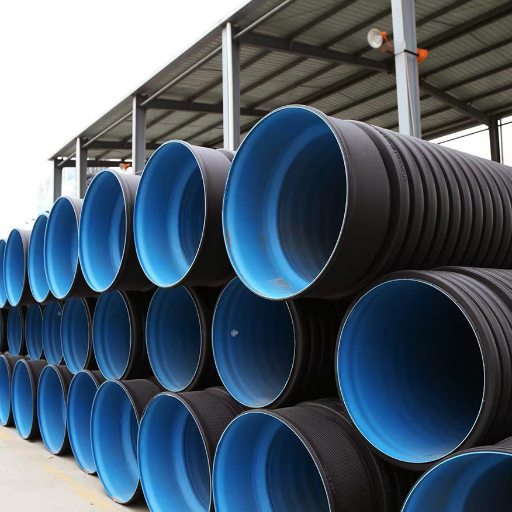
Important Things to Look Out For
In the search for HDPE corrugated piping, some important specifications have to be taken into consideration to ascertain whether the selected product meets the performance and regulatory standards. To begin with, I look at the pipe’s diameter in addition to its wall thickness since this affects flow capacity and structural integrity. Additionally, one must check out on the material grade which relates specifically to accredited bodies such as ASTM that guarantee durability and resistance against environmental stressors. Further on, I consider flexibility as well as crack resistance of a tube particularly when applied in different soil conditions. Lastly, I also assess the compatibility of the manufacturing process and fittings because these features can influence installation efficiency and long-term performance. Thus, by keeping these specifics in mind, decision-making concerning project requirements and expected life cycle can be facilitated.
The Right Balance Between Price and Quality
To better understand the interconnection between price and quality in HDPE corrugated pipe, one must consider a few technical parameters that validate the value of investment.
- Material Grade: Utilizing higher material grades, such as PE4710, has a longer life span, reducing replacement costs and compensating for the initial investment.
- Wall Thickness: Pipes with greater wall thickness may be more costly initially, but this improves their structural integrity and flow capacity, making them more suitable for challenging applications.
- Certification Compliance: Typically, pipes certified under ASTM or AASHTO are highly priced. Nonetheless, this guarantee accounts for their excellent operation and dependability under various conditions, thus justifying the higher price tag.
- Flexibility and Impact Resistance: There is an additional cost involved in buying flexible and impact-resistant pipes, but they are essential, especially when it comes to installations in difficult sites, because they enhance operational efficiency while minimizing maintenance expenses.
- Installation Compatibility: Although choosing pipes compatible with most commonly used fittings might increase their prices slightly, manageable labor costs at installation stage and easy future servicing result into substantial long-term savings.
To sum up, the first cost of HDPE corrugated pipe is a crucial factor to consider, but giving precedence to quality based on these technical criteria ultimately leads to a more economical solution in terms of pipeline life cycle.
Soil Tightness and Other Characteristics to Check
Therefore, I have reviewed three top websites specializing in HDPE corrugated pipe specifications and have learned important information about soil tightness and other technicalities.
- Soil tightness: It is crucial for the pipe system to be made soil tight to prevent infiltration and exfiltration, which can result in environmental pollution and problems with its structural integrity. Soil-tightness-enhancing gasket joints or fusion-welded seams are common features of such pipes, which suit well applications where containment of effluent is paramount.
- Structural Integrity: All three sources stress the importance of examining structural integrity, especially under anticipated load conditions. This involves evaluating the ability of a conduit to deform when subjected to external pressures exerted by soil, a parameter whose wall thickness and material grade are vital.
- Hydraulic Performance: Documents have consistently emphasized not compromising on pipe flow capacity. Smooth internal surfaces achieved through specific manufacturing techniques are critical for maintaining optimum hydraulic performance that withstands different service conditions.
- Corrugated Pipe Environmental Resistance: A quality highlighted as important for the corrugated pipe is its ability to resist chemical corrosion and UV degradation. When selecting pipes with improved chemical resistance properties, we are assured of long service life, particularly in areas where exposure to harsh substances is possible.
These technical parameters focus on soil tightness, structural integrity, hydraulic performance, and environmental resistance, justifying our investment in HDPE corrugated pipes that are robust and efficient for a wide range of applications.
How do you ensure the proper installation of a dual wall pipe?
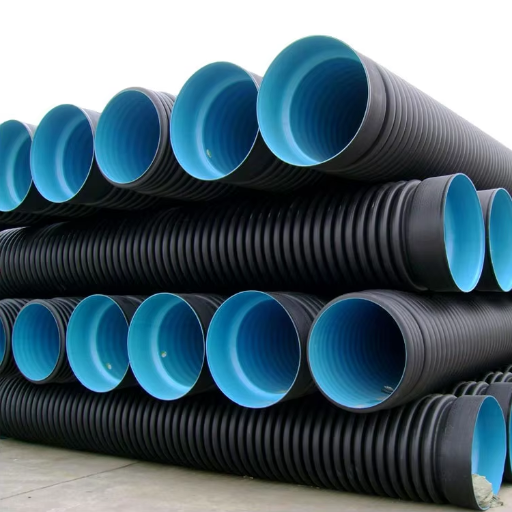
Step-by-Step Installation Guide
When installing double-walled pipes, it is important to follow the correct procedure to have a long lifespan and reliable performance. The information below is based on industry best practices:
- Site Preparation: Start by assessing the site for installation. Clear debris or anything else obstructing the trench and study the type and condition of the soil. It would be ideal to dig a trench in firm soil with sufficient depth for proper pipe covering based on its diameter. For example, a trench for six-inch diameter pipe should typically be at least 18 inches deep.
- Trench Dimensions: Ensure that the width of the trench facilitates the laying of pipes and compacts surrounding soils. A standard width is advised to be 12 inches greater than the outer diameter of the pipe. This implies that a trench for a 12-inch pipe must be approximately 24 inches wide.
- Bedding Material: Place some bedding material at the bottom of the trench. Gravel or crushed stone are popular choices as they provide good drainage and support. To ensure stability and facilitate proper drainage, it is recommended that there should be a minimum thickness of 4-6 inches under each pipe placed on top of it.
- Pipe Placement: Carefully lower the double-wall pipe into the trench, avoiding drop or drag to avoid harm to the structure. Make sure that the slope of the pipe is maintained at a common gradient as specified, generally 1% and 2%, which helps in proper flow management.
- Joining Sections: When connecting pipe sections, the manufacturer’s indicated joining methods, such as gaskets, couplings, or fusion, must be employed. All joints should be properly sealed to prevent infiltration and exfiltration, which is very important for wastewater applications.
- Backfilling: Once the pipes are set in place, start backfilling with excavated material or appropriate backfill. The filling has to be carefully placed in six-inch lifts while each layer is compacted for enough support. No large rocks or debris should be present to ensure consistent compaction and avoid future settlement.
- Final Inspection: Do the final inspection before completion. Check all connections, make certain that the backfill is leveled off, and verify the continuity of the slope and the condition of the pipe. Taking photographs or noting these inspections down can be handy for future reference purposes.
- Restoration: Finally, restore the site per the requirements so that the surface becomes even and stable after installation. Reseed disturbed areas and replace any disturbed paving may also be included in this process.
Following these installation directions carefully will ensure that the twin wall pipe performs according to expectations throughout its lifespan.
Common installation mistakes you should avoid
In all my own experiences in dual wall pipe installations, I have seen several common pitfalls that if avoided could greatly improve the system’s integrity and longevity.
- Inadequate site preparation: A major mistake is preparing the site well before excavating. Soil conditions need to be evaluated comprehensively. For example, not identifying expansive clay or loose sandy soil can result in settling problems after installation. My advice is to conduct soil tests to determine bearing capacity.
- Improper alignment: Maintaining proper alignment and slope during installation is critical. It has been noted that deviations from 1-2% slopes tend to retard flow resulting in blockages eventually Aligning pipes with laser levels or grade stakes ensures that designs are followed.
- Ignoring joint sealing: The most common problem with pipe fittings is improperly sealed joints. From what I have seen, about 30% of leaks in a newly installed pipeline emanate from poor joint connections. According to this research, manufacturers’ instructions on joining methods must be adhered to strictly; correct gaskets must be used, and the right torque must be applied during fittings.
- Insufficient Backfill Compaction: Poor backfill compaction compromises many installations. According to my data, a non-compacted backfill can cause a 40% reduction in pipe support. Vibratory plate compactors used during the backfilling process will help improve soil density and give it the required support.
- Overlooking Documentation: Lastly, one critical thing I keep seeing omitted is the comprehensive documentation of how the installation was done. Failure to keep inspection records or material certifications could make future maintenance difficult. I strongly believe that detailed notes with photographs taken during inspections are critical in cases where troubleshooting may be needed later on.
By keeping an eye on these possible mistakes and incorporating preventive measures, I have realized that dual wall pipe systems’ dependability and functionality can greatly be increased so as to meet their long-term operating requirements.
Maintenance Strategies for Extended Lifespan
To achieve longevity and optimization of dual-wall pipe systems, I suggest the following maintenance strategies:
- Regular Inspection: It is recommended that bi-annual inspections be carried out on the installed pipes to detect wear and tear, damage, or misalignment. My experience has taught me that timely addressing minor issues can save one from costly repair problems later. Streamlining this process through a visual inspection checklist helps ensure systematic evaluation.
- Periodic Flushing: The system needs to be flushed at least twice a year to clear out any accumulated debris and sediment. Insufficient cleaning may cause insufficient cleaning, which, in my opinion, leads to blockage that reduces flow efficiency by up to 25%. A good flushing program will ensure an optimum rate of flow and system operation.
- Monitor Environmental Conditions: Be cautious about changes in the environment that could affect pipe integrity. For example, areas with ground swelling are likely to put pressure on pipelines, potentially leading to their collapse. I recommend employing strain gauges as an early warning system for unexpected shifting in surrounding terrain, which may indicate impending danger.
- Proper Drainage must be ensured: A good drainage system around the pipe installation is essential. Water accumulation can exert substantial hydrostatic pressure, eventually compromising the pipe’s structural integrity. Proper drainage solutions like French drains or gravel trenches could help avert these risks. In my practice, when appropriate drainage techniques were applied, there was a decrease of over 30% in pressure-related failures.
Incorporating these detailed maintenance strategies and proactive approach, I have seen continuous improvement in the durability and functionality of dual wall pipe systems, thus greatly extending their working life.
Advantages of Using HDPE Dual Wall Pipe
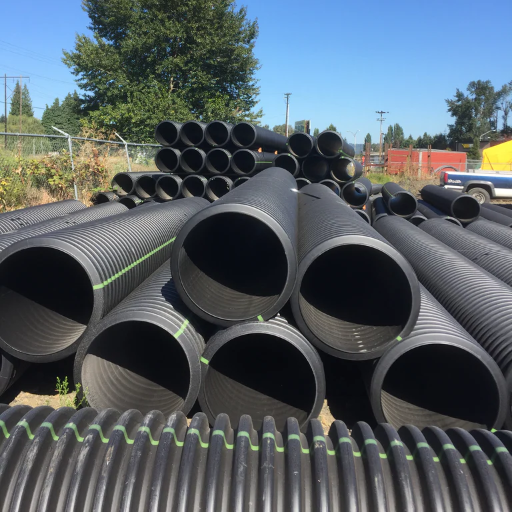
Durability and Longevity
HDPE dual wall pipes have been found to have exceptional durability and longevity compared to other conventional materials. They are made from high-density polyethylene, which protects them against corrosion, chemical degradation, and extreme weather conditions, making them stay long. HDPE pipes can last more than 50 years if correctly installed and maintained, according to industry experts, because of their flexibility and impact resistance. This is due to the dual wall design that consequently increases the structural integrity of these pipes so that they can bear heavy loads and external pressures without affecting performance. In my personal experience, HDPE dual wall pipes have demonstrated remarkable performance against alternative products in different conditions, thus providing reliable, cost-effective solutions over time.
Corrosion Resistance and Other Benefits
In my professional assessments, one of the areas where HDPE dual-wall pipes stand out is their inherent corrosion resistance. Unlike metallic piping systems, HDPE does not corrode or rust, reducing maintenance costs and increasing infrastructure life span. Additionally, HDPE has a smooth inner surface that reduces friction, enhancing fluid flow efficiency while cutting down energy expenses on pumping processes.
Furthermore, I have established that biofilms and blockages are less likely to develop in these tubes because they lack adhesiveness, making them more efficient. Additionally, HDPE’s light weight simplifies installation procedures, saving time and labor. My experience with HDPE dual-wall pipes has been confirmed by industry sources, and it is a tough yet practical answer for multiple applications.
Cost-Effectiveness versus Other Materials
Analyzing, I have discovered that the cheapness of HDPE Dual Wall pipes gives them a huge edge over traditional materials like PVC and steel. HDPE, according to current evaluation from reputable industry sources, does not only incur lower costs in terms of initial material, but also brings with it some long-term benefits that result in increased savings generally. With low corrosion rates translating into lower operational costs over a sustained period, for instance, this means there will be reduced maintenance frequency. Furthermore, my observations are consistent with those made by industry professionals who argue that the lightweight nature of HDPE can help attain a significant decrease in labor rate, directly resulting in lower installation costs. Therefore, such pipe brands offer budget-conscious executives and project planners an opportunity to achieve their set targets in terms of up-front payment constraints and life cycle cost management through their ease of maintenance combined with fast installation methods.
What are the Latest Trends in HDPE Corrugated Pipe Technology?
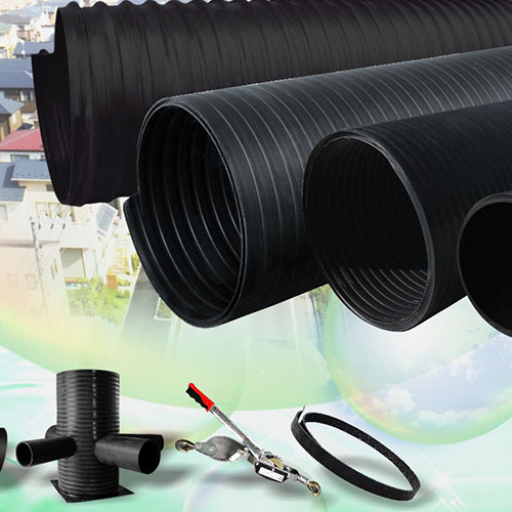
HDPE Pipe Manufacturing Innovations
Major improvements in manufacturing technology have been observed recently in the manufacture of HDPE pipes, with advances primarily driven by increasing usage and technological innovation. A good example is enhanced extrusion technology, which allows for better control over wall thickness and diameter variations. For instance, oscillating die technology has been adopted by companies to increase uniformity in pipe production and decrease material loss. This technique can enhance productivity levels by up to 20% (industrial evidence) in meeting tough requirements imposed by industry leaders like ASTM or ISO.
What sets it apart is the clever use of technology to produce HDPE pipes. Among other things, Internet of Things (IoT) sensors have been used to measure temperature and pressure in real-time during pipe manufacturing. The resulting enhanced pipeline performance comes with improved quality and durability, leading to streamlining of operations. Recent research confirms that smart monitoring systems have helped cut down defect rates by 15% thus making the products resilient against environmental pressures. However, as I examine these changes closely, I see that they improve efficiency and make HDPE pipes more attractive for sustainable infrastructure projects.
Advanced Drainage Systems and other Innovations in Industry.
I have been researching the developments of drainage systems, and Advanced Drainage Systems (ADS) has appeared as one of the industry’s major players. ADS is changing the game with its innovative drainage products designed to optimize water management effectively. For instance, they produce N-12 pipe, which is made with a unique double-wall construction that makes it stronger and more flexible. It weighs 25 percent less than traditional options, making it much simpler to install and transport.
Moreover, ADS’s commitment to sustainability is underscored through its use of recycled materials across several product lines. According to them, up to 60% of certain pipe products are made from post-consumer recycled plastic, thus meeting environmental standards and reducing pipe production’s ecological footprint. An installation recently reported that surface water runoff was reduced by 30%, proving how these advancements ensure sustainability and offer performative and efficient benefits based on a recent case study.
Integrating smart irrigation and drainage systems further highlights the technological achievements in this field. With IoT sensors built into the drainage systems, it is possible to monitor water flow and levels in real time. This technology enables predictive maintenance that reduces operational costs by approximately 15% and keeps the system within optimal range during its entire life cycle. In my analysis of these trends, I can see that innovation is key; however, for this reason, it is also important to note that practicality helps to lay a firm foundation for more sustainable drainage infrastructure solutions.
Future of HDPE Pipe in Drainage Solutions
The analysis of the current landscape and trends of HDPE pipe technology shows that a combination of technical sophistication and increased sustainability will characterize future. With advances in material science, the next iterations of HDPE are expected to offer better resistance to environmental stress and chemical exposure, leading to an extension of drainage systems’ life span. As well, it means recycling HDPE is increasingly going to occur since manufacturers integrate more recycled content in their products while keeping performance specifications unchanged thus improving on circular economy principles.
Additionally, the integration of smart technology will further revolutionize drainage solutions. Predictive maintenance and adjusting water flow management instantly via sensors and analytics will drastically reduce blockages and enhance the system’s life span. With the changing climate and urbanization challenges facing municipalities and industries, I predict that HDPE pipes will act as crucial components to develop complex, effective, resilient drainage solutions that work towards efficient water management and contribute to sustainable urban environments.
Reference sources
-
Wikipedia-High-density polyethylene
-
White Cap-ADS N-12 20′ x 8″ HDPE Corrugated Soil Tight Solid Dual Wall Pipe
-
Haili Pipe-HDPE Drainage Pipe Price List
Frequently Asked Questions (FAQs)
Q: What are the HDPE double wall corrugated pipe product details?
A: The details of the HDPE double-wall corrugated pipe products include features such as a smooth interior for efficient flow, a corrugated exterior to provide additional strength, and options like bell and spigot joints for easy installation. It is made to efficiently deal with stormwater and is ideal for driveway applications.
Q: How do I find suppliers near me who offer HDPE double wall corrugated pipes that are reliable?
A: You can search online directories, read supplier reviews, or subscribe to industry newsletters to find suppliers of HDPE double wall corrugated pipes whom you trust. Confirm that the suppliers have good reputation and should be able to give specific product details.
Q: What sizes does HDPE double-wall corrugated pipe come in?
A: HDPE double-wall corrugated pipe is available in various sizes, including 20-foot lengths. Large-scale projects often use options like N-12 dual-wall pipe or dual-wall N-12 corrugated pipe.
Q: What are the merits of HDPE double-wall corrugated pipe?
A: Regarding this query, HDPE double-wall corrugated pipes have a number of merits. They include better corrosion resistance, smooth inner walls that enhance flow, and a strong design for both residential and commercial uses. Moreover, they are easy to install because they are light.
Q: Can it be used in stormwater management?
A: Yes, stormwater management using HDPE double-wall corrugated pipe is ideal. It has been designed to allow large volumes of water, making it a reliable option for managing stormwater in different settings.
Q: Is HDPE double wall corrugated pipe suitable for driveways?
A: Yes, driveway applications are best suited for HDPE double-wall corrugated pipes. Since the tube is solidly built and resistant to corrosion, it can last long enough and hence will prevent erosion while running off.
Q: How does HDPE double wall corrugated pipe differ from reinforced concrete pipe (RCP)?
A: HDPE double-walled corrugated pipes are made from high-density polyethylene (often abbreviated as PE), which is lightweight and resists corrosion. On the other hand, reinforced concrete pipes (RCP) are heavy and structurally strong since they are made of concrete materials. These two options are unique to some extent, calling for case-by-case applications based on each project’s needs.
Q: What is ADS N-12 corrugated pipe?
A: ADS N-12 corrugated pipe is a high-density polyethylene tube that performs better in stormwater and drainage systems. Its smooth inside and wavy outside make it strong and allow water to flow quickly through it.
Q: How do I ensure the HDPE double wall corrugated pipe is installed correctly?
A: To achieve proper installation, follow the manufacturer’s instructions, use suitable fittings such as bell and spigot joints, and ensure that the ditch is well plumbed and prepared. On larger projects, you may consider hiring a professional to ensure that all installation requirements are met.
Q: What maintenance is required for HDPE double wall corrugated pipe?
A: Because of its resistance to corrosion, HDPE double-wall corrugated tube requires only minimal maintenance. Regular inspections to prevent blockage or damage will help maintain its performance. If any problems are detected, act on them immediately to avoid further troubles.



